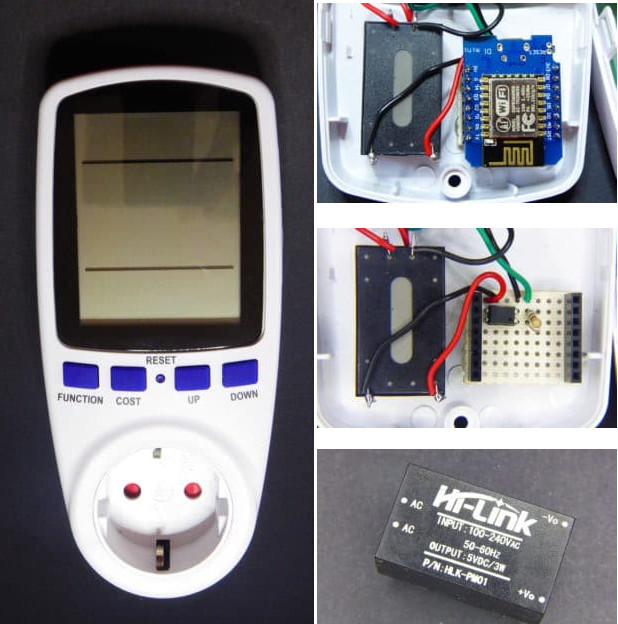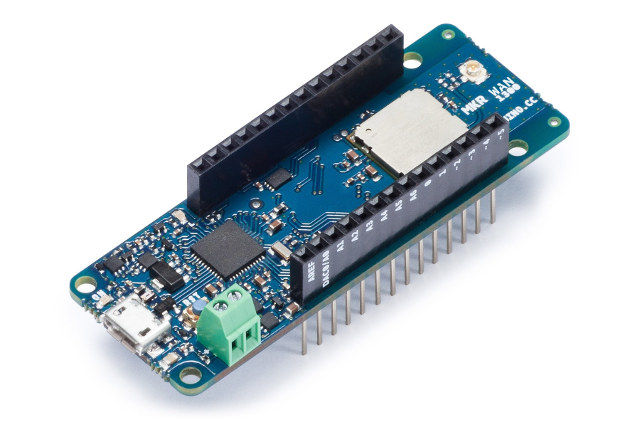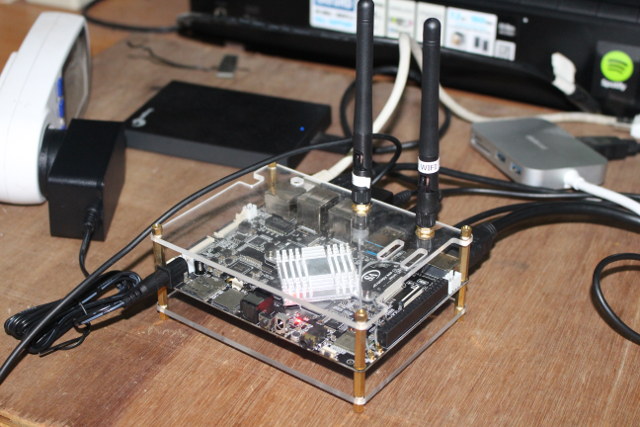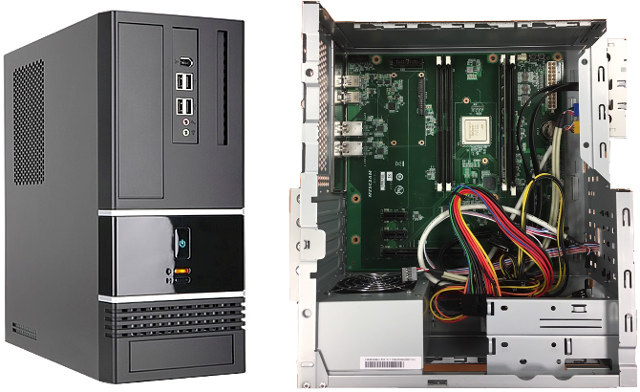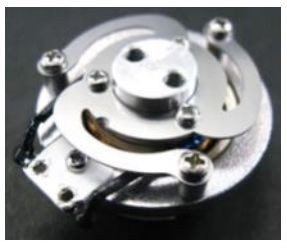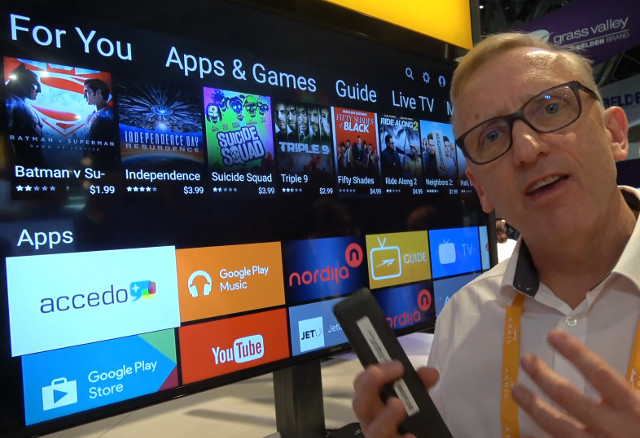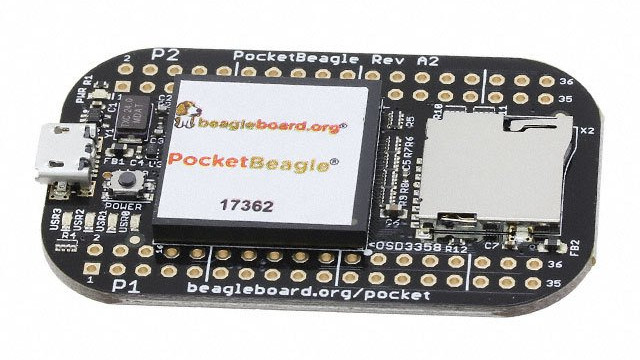Sonoff-Tasmota and ESPurna are the two main open source firmware used in home automation devices, such as Sonoff wireless switches, based on Espressif ESP8266 WiSoC. Xose Pérez – aka Tinkerman – has recently purchased “dumb” power meters / kill-a-watt meters, added WiFi to them with ESP-01 module and Wemos D1 mini board, and implemented support in ESPurna firmware leveraging earlier reverse-engineering work by Karl Hagström. The power meter above looks exactly like the one I’ve been using for review for over two years, and has been more more reliable than other models, such as Broadlink SP2 (with built-in WiFi) that gave up on me after a few months. Xose actually noticed that old and newer models of the power meters were based on different solutions. Karl’s meter relied on ECH1560, while Xose’s new meter was instead based on Vango V9261F, which has a public datasheet, and was already being worked on by […]
Arduino MKR WAN 1300 & MKR GSM 1400 Boards Launched with LoRaWAN and 3G Connectivity
Arduino has introduced two new boards right in time for Maker Faire New York: MKR WAN 1300 with a LoRa radio, and MKR GSM 1400 with a “3.75G” cellular module, both software compatible with Arduino Zero, and in Arduino MKRZero board form factor. MKR WAN 1300 Board Arduino MKR WAN 1300 specifications: MCU – Microchip Atmel SAMD21 32-bit ARM Cortex M0+ MCU @ 48 MHz with 32 KB SRAM, 256 KB flash (8KB for bootloader) Digital I/O Pins – 8x digital I/Os, 12x PWM, UART, SPI, and I2C, 8x external interrupts Analog Pins – 7x analog inputs (8/10/12-bit ADC), and 1x analog output (10-bit DAC) DC Current per I/O Pin – 7 mA LPWAN connectivity Murata CMWZ1ZZABZ LoRa module based on Semtech SX1276 and STMicro STM32L Antenna power – 2dB Carrier frequency – 433/868/915 MHz Working regions – EU/US USB – 1x micro USB port for power and programming […]
Checking Out Debian and Linux SDK for VideoStrong VS-RD-RK3399 Board
VideoStrong VS-RD-RK3399 (aka VS-RK3399) is a features-packed development board powered by Rockchip RK3399 hexa core core processor which offers an alternative to Firefly-RK3399 board. The company sent me a development kit for evaluation, and I’ve already looked into VS-RD-RK3399 hardware and SDK in the first part of the review. Today, after shortly looking into the pre-installed Android 7.1 OS to make sure the board boots fine, I’ll report my experience with Debian 9, and building it from source. A Quick Look at Android 7.1 I connected the board to my HDMI TV, added an Ethernet cable, and after powering it, VS-RK3399 promptly booted into Android 7.1 with the following launched. It just has a few apps pre-installed, and lack Google Play store, but as I’ve seen in the new version of the SDK, a patch for Google Play store is provided, if that’s something you need for your use case. […]
GIGABYTE SynQuacer 96Boards Enterprise Platform is Powered by SocioNext SC2A11 24-core ARMv8 SoC
GIGABYTE, Socionext and Linaro have partnered to design a software development platform compliant with 96Boards Enterprise specifications, with GIGABYTE taking care of manufacturing the hardware based on Socionext SC2A11 processor, while Linaro will provide support via 96Boards community. GIGABYTE SynQuacer platform preliminary specifications (based on photos and SC2A11 specifications): SoC – Socionext SynQuacer SC2A11 24x ARM Cortex-A53 MPCore cores @ up to 1GHz, with 32KB/32KB I/D L1 cache, 256 KB L2 cache, and 4MB L3 cache (5W power consumption) System Memory – 4x DIMM slots for 64-bit DDR4-2133Mbps with ECC up to 64GB Storage – 32GB Samsung KLMBG2JENB-B041 eMMC 5.1 flash + 2x SATA interfaces Connectivity – 2x Gigabit Ethernet (RJ45) with IPSec Network Offload Engine USB – 2x USB 3.0 ports on motherboard (via Renesas D720201), 4x USB ports on front panel via expansion board Audio – 1x microphone input, 1x speaker output on front panel Expansion – 1x PCie […]
Flexible Silicone Case for LattePanda Board
I’ve seen many different kind of cases for development board from the simple acrylic enclosures, cheap plastic case, and more expansive wooden or metal cases. However so far I don’t think I had ever come across silicone cases, but while browsing new arrivals on DFRobot, I discovered a silicone case for LattePanda board. The case will fit closely all around the board, and have opening for ports and headers that are clearly marked including I/O pins. It takes a little less space than other type of cases, and should absorb shocks better in case of fall. At first look, it looks like it might prevent good cooling, as it does not appears suitable for the heatsinks kit sold for the board, but actually the bottom cover offers space for the fan. Other specifications listed for the case: Non-toxic and non-smell silicone material (food grade) Cold & heat fatigue resisting Static […]
Onkyo Has Developed a Shaker Turning Walls & Home Appliances Into Speakers
According to an article on Nikkei Technology, Onkyo has designed a shaker that can be attached directly to walls and/or the surface of home appliances, and turn them into speakers to play music and voices. The device developed using Onkyo voice & music playing technologies, has a a minimum resonance frequency of 115 hertz, and measures just 41x 36 x 21 mm. The company expects it to be used in places where visible speakers are problematic, either due to installation issues because of requirements such as waterproofness or air tightness, or for aesthetic reasons. Onkyo will provide the shaker to OEM’s in order to be integrated into home appliances or walls for artificial intelligence, or Internet of things applications. So voice enabled walls and washing machines may just be around the corner… Jean-Luc Aufranc (CNXSoft)Jean-Luc started CNX Software in 2010 as a part-time endeavor, before quitting his job as a […]
ARRIS Showcases Android TV Set-Top Boxes at IBC 2017
Just last week, we found out there was a fair amount of TV boxes running Android TV with certification from Google, with most of them from PayTV providers or OEMs. Today, I’ve come to better understand what that means thanks to ARMDevices.net interview of ARRIS at IBC2017. I used to think getting a device with official Android TV support would mean getting Google’s Leanback launcher, but there’s more to it, as Google also offers “operator tier” Android TV certifications, which allow manufacturer to use Android TV operating system with their own launcher/user interface, and official support for Google services like Google Play Store, Google Play Music and so on. ARRIS International has a whole family of certified Android TV devices with 4K UHD set-top boxes and DVR systems as shown in the table below, all likely based on Broadcom SoCs. Wi-Fi Set-Tops Wi-Fi Processor DMIPS Type Size Zx4430 2×2 802.11ac […]
$25 PocketBeagle is a mini BeagleBone Board based on Octavo OSD3358-SM SiP
Earlier this year, Qwerty Embedded designed PocketBone board, an Eagle & KiCad open source hardware board software compatible with BeagleBone, but much smaller and based on Octavo OSD3358 system-in-package. This was never an official BeagleBoard.org board, and AFAIK it was not made broadly available. But the BeagleBoard foundation has now introduced PocketBeagle with a similar form factor, but based instead on the latest Octavo OSD3358-SM SiP that embeds TI Sitara AM3358, 512MB RAM, a PMIC, and various passive components into a 21×21 package, and exposing more I/Os thanks to 72 through holes. PocketBeagle board specifications: SiP (System-in-Package) – Octavo Systems OSD3358-SM with TI Sitara AM3358 ARM Cortex-A8 processor @ up to 1 GHz, PowerVR SGX530 GPU, 2x PRU, ARM Cortex-M3 for power and security management functions 512MB DDR3 800 MHz 4kB I2C EEPROM TPS65217 PMIC + LDO with integrated 1-cell LiPo battery support Storage – micro SD slot USB – […]


